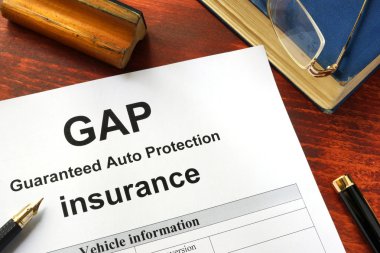Home Insurance Policy A Complete 99 Easy Guide | What it is & How it works? | Why Do you need Home Insurance Policy.
When it comes to protecting your expensive and valuable asset, Like your home, having a Best insurance policy is essential. Home insurance provides you with financial security and peace of mind, ensuring that you are covered in the event of unexpected damages or losses. In this complete guide, we will walk you through everything you need to know about home insurance and help you make an informed decision when choosing the right policy for your needs.
In the complex landscape of financial security, one aspect that homeowners cannot afford to overlook is home insurance. A home is often the most significant investment a person makes, and protecting it against unforeseen events is crucial. Home insurance policies serve as a financial safety net, offering protection against a variety of risks that could potentially result in substantial financial loss. In this comprehensive guide, we will delve into the intricacies of home insurance policies, exploring what they are, how they work, and why they are an essential component of responsible homeownership.

Table of Contents
Understanding And Defining Home Insurance
Home insurance is a type of property insurance that provides coverage for your home and its contents against a wide range of risks. It typically includes protection against damages caused by fire, theft, vandalism, natural disasters, and liability for injuries that occur on your property. The policy is designed to protect against losses or damages that may arise from a range of perils, including natural disasters, theft, vandalism, and liability claims. Home insurance policies typically consist of several components, each addressing specific aspects of the homeowner’s financial security.
Components of a Home Insurance Policy
Dwelling Coverage
The cornerstone of any home insurance policy is dwelling coverage, which protects the structure of the home itself. This includes the foundation, walls, roof, floors, and other structural components. Dwelling coverage is essential because it ensures that the homeowner can rebuild or repair their home in the event of covered perils, such as fire, windstorms, or other disasters specified in the policy.
Personal Property Coverage
Beyond the structure, home insurance also extends coverage to personal belongings within the home. Personal property coverage helps replace or repair furniture, electronics, clothing, and other items damaged or lost due to covered events. It’s important for homeowners to conduct a thorough inventory of their belongings to determine the appropriate amount of coverage needed.
Liability Coverage
Liability coverage is a critical component of home insurance that protects homeowners from financial responsibility in case someone is injured on their property. This coverage can help pay for medical expenses, legal fees, and damages if the homeowner is found liable for an accident or injury that occurred on their premises.
Additional Living Expenses (ALE) Coverage
If a covered event renders a home uninhabitable, ALE coverage provides financial assistance for temporary living expenses. This can include hotel bills, rental costs, and additional meal expenses incurred while the home is being repaired or rebuilt. ALE coverage is particularly valuable, as it helps maintain the homeowner’s standard of living during challenging times.
Why Do You Need Home Insurance?
A home is more than just a structure; it’s a haven, a place of refuge and cherished memories. However, as with any valuable asset, homes are vulnerable to a myriad of risks that can result in financial devastation. This is where the significance of a home insurance policy becomes paramount. In this comprehensive exploration, we will delve into the compelling reasons why every homeowner needs a robust home insurance policy. From protecting against unforeseen disasters to mitigating liability risks, home insurance is a crucial component of responsible homeownership.
While it’s not legally required home insurance, having home insurance is highly recommended. Your home is likely one of your most significant investments, and without insurance, you could be left with a hefty financial burden in the event of a disaster or accident. Home insurance offers financial protection against unforeseen circumstances, giving you the ability to rebuild or repair your home without depleting your savings.
I. Financial Safeguard Against Natural Disasters
One of the primary reasons to invest in a home insurance policy is to shield your property from the financial fallout of natural disasters. From earthquakes to floods, wildfires to hurricanes, homes are susceptible to a range of calamities that can cause extensive damage. Without adequate insurance coverage, homeowners may find themselves grappling with the overwhelming cost of rebuilding or repairing their homes.
a. Coverage for Fire Damage
Wildfires, electrical faults, or accidental fires can wreak havoc on a home, leading to substantial damage or complete destruction. Home insurance provides coverage for fire-related damages, allowing homeowners to recover financially and rebuild their lives.
b. Protection Against Floods
In standard home insurance policies it will not cover the flood damage. However, given the increasing frequency of floods in various regions, homeowners are encouraged to purchase a separate flood insurance policy. This specialized coverage ensures that the financial burden of flood-related losses is mitigated.
c. Earthquake Insurance
Earthquakes, though less frequent in certain areas, can cause significant structural damage. Homeowners residing in earthquake-prone regions should consider adding earthquake insurance to their policies to protect against the potential devastation and financial aftermath of seismic events.
II. Safeguarding Personal Belongings
Beyond the physical structure of the home, personal belongings hold sentimental and financial value. Home insurance extends coverage to protect these possessions against a variety of perils, ensuring that homeowners don’t bear the full financial brunt of unexpected events.
a. Coverage for Theft and Vandalism
Burglaries and acts of vandalism can leave homeowners not only emotionally distressed but also facing significant financial losses. Home insurance policies typically include coverage for stolen or damaged personal property, providing a measure of financial security in the wake of criminal activities.
b. Replacement of High-Value Items
For high-value items such as jewelry, art, or electronic equipment, standard coverage limits may not be sufficient. Homeowners can opt for additional coverage or scheduled personal property coverage to ensure that their most valuable belongings are adequately insured.
III. Liability Protection
Homeownership comes with a degree of responsibility not just for the property itself but also for the well-being of those who visit. Liability coverage within home insurance policies is designed to protect homeowners from financial liabilities in the event of accidents or injuries that occur on their property.
a. Medical Expenses and Legal Costs
If a guest is injured on your property and holds you responsible, liability coverage can help cover their medical expenses and legal costs. This can be especially important in situations where a lawsuit might otherwise result in significant financial strain.
b. Protection Against Lawsuits
Homeowners can be held liable for a range of incidents, from slips and falls to dog bites. Without liability coverage, the financial consequences of a lawsuit can be staggering. Home insurance acts as a shield, providing the necessary financial resources to navigate legal challenges.
IV. Additional Living Expenses (ALE) Coverage
Disasters such as fires or severe storms can render a home uninhabitable, forcing homeowners to seek alternative accommodations temporarily. ALE coverage within home insurance policies helps alleviate the financial burden of additional living expenses incurred during the period of home restoration.
a. Hotel Stays and Rental Costs
When a home is undergoing repairs or rebuilding, homeowners may need to stay in hotels or rental properties. ALE coverage ensures that the costs associated with temporary living arrangements are covered, allowing homeowners to maintain their standard of living despite the upheaval.
b. Meal Expenses and Other Incidentals
In addition to lodging costs, ALE coverage may extend to cover additional expenses such as meals, transportation, and other incidentals incurred due to displacement. This feature is particularly valuable for homeowners navigating the challenges of post-disaster recovery.
V. Mortgage Requirements and Lender Mandates
For many homeowners, a mortgage is a crucial component of the homebuying process. Mortgage lenders often require borrowers to maintain a home insurance policy as a condition of the loan agreement. This mandate serves to protect the lender’s financial interest in the property.
a. Lender-Required Coverage
Lenders typically specify the minimum coverage required to safeguard their investment in the mortgaged property. Homeowners must maintain insurance coverage that meets or exceeds the lender’s stipulated requirements for the duration of the mortgage.
b. Insurance Escrow Accounts
In some cases, mortgage lenders may set up an escrow account to collect insurance premiums and property taxes on behalf of the homeowner. This ensures that the necessary payments are made promptly, reducing the risk of coverage lapses.
VI. Mitigating Risks and Enhancing Peace of Mind
Homeownership involves a multitude of responsibilities and potential risks. A comprehensive home insurance policy serves as a proactive risk management tool, offering peace of mind to homeowners by providing financial protection against a range of unforeseen events.
a. Risk Management and Prevention
While insurance cannot prevent disasters, it serves as a financial safety net that enables homeowners to recover more quickly from the aftermath. This, in turn, allows homeowners to focus on implementing risk management strategies, such as home maintenance and security measures, to reduce the likelihood of future incidents.
b. Peace of Mind Amid Uncertainty
Life is inherently uncertain, and disasters can strike without warning. Knowing that one’s home and possessions are protected by a comprehensive insurance policy brings a sense of security and peace of mind, allowing homeowners to face the future with confidence.
VII. Factors Influencing Home Insurance Costs
While the need for home insurance is evident, the costs associated with coverage can vary based on several factors. Understanding these influences can help homeowners make informed decisions when selecting a policy that aligns with their budget and coverage requirements.
a. Location and Geographic Risks
Homes located in areas prone to natural disasters such as hurricanes, earthquakes, or floods may incur higher insurance premiums. The geographic risk profile of the home’s location plays a significant role in determining the cost of coverage.
b. Home Construction and Age
The construction materials used in a home and its age influence insurance costs. Newer homes and those constructed with resilient materials may qualify for lower premiums, as they are perceived as less risky in terms of potential damage.
c. Coverage Limits and Deductibles
Homeowners can choose coverage limits and deductibles based on their risk tolerance and budget. Higher coverage limits and lower deductibles generally result in higher premiums, while lower coverage limits and higher deductibles may lead to lower premiums.
d. Home Security Measures
Installing security features such as burglar alarms, smoke detectors, and fire extinguishers can lead to discounts on insurance premiums. Insurers view these measures as proactive steps that reduce the risk of theft and damage.
e. Credit History
In some regions, insurers consider the homeowner’s credit history when determining premiums. A good credit score may result in lower insurance costs, as it is often associated with responsible financial behavior.
f. Claims History
A homeowner’s claims history can impact insurance premiums. Those with a history of frequent claims may be considered higher risk, leading to higher premiums or potential difficulty in obtaining coverage.
VIII. Common Exclusions and Optional Coverages
While home insurance policies provide comprehensive coverage, there are certain exclusions that homeowners should be aware of. Additionally, optional coverages can be added to tailor the policy to specific needs.
a. Flood Insurance
Flood damage is a common exclusion in standard home insurance policies. Homeowners in flood-prone areas are advised to purchase a separate flood insurance policy through the National Flood Insurance Program (NFIP) or a private insurer.
b. Earthquake Insurance
It is most similar to flood insurance, and earthquake coverage that is not included in standard home insurance policies. Homeowners in earthquake-prone regions may need to purchase a separate earthquake insurance policy to safeguard their homes.
c. Sewer Backup Coverage
Damage caused by sewer backups is often excluded from standard policies. Homeowners can opt for additional coverage to protect against the financial repercussions of sewage-related incidents.
d. Scheduled Personal Property
For high-value items such as jewelry, art, or collectibles, homeowners can purchase scheduled personal property coverage. This ensures that these items are adequately insured, as standard policies may have limitations on coverage for specific types of belongings.
IX. Tips for Choosing and Managing Home Insurance
Selecting the right home insurance policy involves careful consideration of various factors. These tips can guide homeowners in making informed decisions and managing their insurance effectively.
a. Assessing Coverage Needs
Before purchasing a home insurance policy, homeowners should assess their coverage needs. This involves evaluating the value of the home, its contents, and potential liabilities to determine the appropriate coverage limits.
b. Comparing Quotes
Obtaining quotes from multiple insurance providers allows homeowners to compare coverage options and premiums. This ensures that they make an informed decision based on their specific requirements and budget.
c. Understanding Policy Terms
Home insurance policies may be a complex, in various terms and conditions. Homeowners should take the time to understand the policy terms, exclusions, and limitations to avoid surprises in the event of a claim.
d. Periodic Policy Reviews
As circumstances change, it’s important for homeowners to review their insurance policies periodically. Life events such as renovations, additions, or changes in property value may necessitate adjustments to coverage.
e. Bundling Insurance Policies
Many insurance providers offer discounts to customers who bundle multiple policies, such as home and auto insurance. Bundling can result in cost savings and simplified policy management.
f. Home Maintenance
Regular home maintenance is not only essential for the longevity of the property but also for maintaining favorable insurance premiums. Keeping the home in good condition reduces the risk of damage and demonstrates responsible homeownership.
Types of Home Insurance Policies
- Basic Homeowners Insurance
The most common type of home insurance is homeowners insurance. This policy covers the structure of your home, as well as your personal belongings, against a range of perils. It also provides liability coverage, protecting you if someone gets injured on your property. - Condo Insurance
If you own a condominium house, you’ll need to have condo insurance. This policy covers your personal belongings and any additions or alterations you’ve made to your unit. It will also provides you the liability coverage for accidents if anything like that occur within your unit. - Renters Insurance
For those who are renting a home or apartment, renters home insurance is a must. This policy covers your personal belongings and provides liability coverage in case someone gets injured while visiting your rental property.
Choosing the Right Home Insurance Policy
Assessing Your Needs
Before purchasing a home insurance policy, assess your needs carefully. Consider factors such as the value of your home, the replacement cost of your belongings, and any specific risks in your area.
Comparing Quotes and Providers
Obtain quotes from multiple insurance providers and compare the coverage, deductibles, limits, and premiums. Look for reputable insurers with a good track record of customer service and prompt claims handling.
Reviewing Policy Exclusions and Limitations
Carefully review the policy exclusions and limitations to understand what is covered and what is not. Some common exclusions include flood damage, earthquake damage, and certain types of personal property like jewelry or fine art. If you need coverage for these items, consider purchasing additional policies or endorsements.
In conclusion:
Home insurance is a vital investment to protect your home and belongings from unexpected risks. By understanding the types of insurance policies available, coverage options, and by carefully selecting the right policy for your needs, you can ensure that your home and financial stability are safeguarded. Don’t wait until it’s too late; get the peace of mind you deserve with a comprehensive home insurance policy.
The need for a home insurance policy goes beyond mere financial protection; it is a fundamental aspect of responsible homeownership. From shielding against the financial fallout of natural disasters to protecting personal belongings and mitigating liability risks, home insurance is a comprehensive solution for the myriad challenges that homeowners may face. Whether mandated by mortgage lenders or chosen proactively, a robust home insurance policy offers peace of mind and financial security in the face of life’s uncertainties. As guardians of our havens, investing in the right insurance coverage ensures that our homes remain the safe and secure sanctuaries we envision them to be, even in the face of unforeseen adversities.
Blue Cross Blue Shield Health Insur 99 Easy Guide
Health Insurance in the US A 100 Easy Guide
What Is Insurance Explained In 12 Easy Steps
Compare Car Insurance Quotes Complete Easy Guide
For More Posts Click Here










